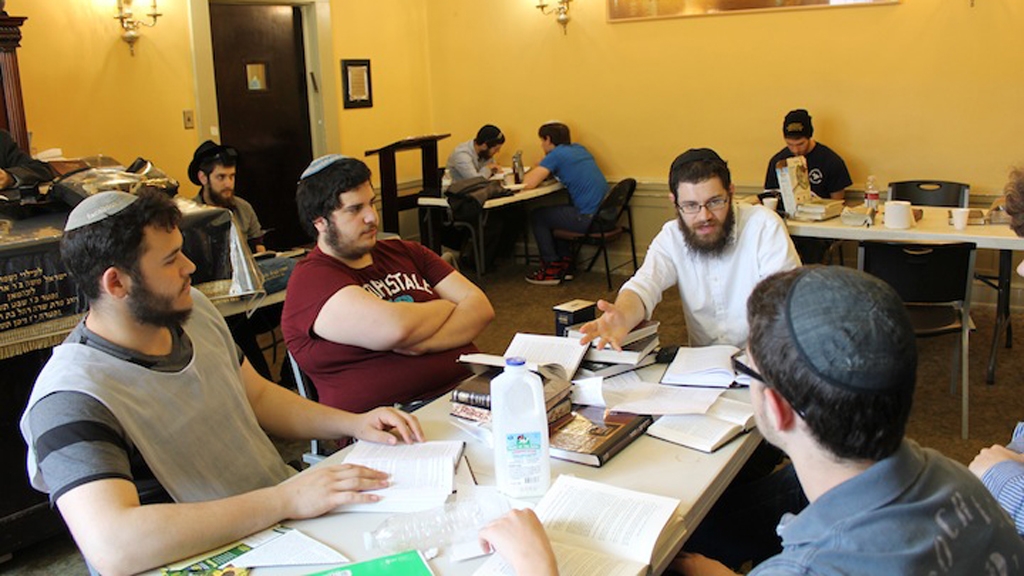The publication of Joseph Caro‘s Shulchan Aruch in the 16th century marked the end of an important era in the history of Jewish legal literature. This was partly due to the work’s practicality and comprehensiveness, but even more significantly, due to the historical changes that came with the onset of modernity, which forced Jewish law to develop in radically new directions.
As with earlier codifications of Jewish law, the publication of the Shulhan Arukh was not universally accepted. Some argued that codes undermined the training and flexibility of poskim (halakhic scholars). Others, such as Solomon Luria and Mordecai ben Avraham, argued that by omitting the Talmudic context, codes misrepresented the halacha (Jewish law).
Subsequent generations, however, came to embrace the Shulhan Arukh, especially after Joshua ben Alexander Falk wrote a critical commentary to the Shulhan Arukh, the Sefer Me’irat Einayim, which attempted to fill in these gaps. Falk was later followed by Joel Sirkes who wrote his own commentary to the Shulhan Arukh, the Bayit Hadash and David ben Samuel ha-Levi’s Turei Zahav (“Taz“), Shabbetai ben Meir HaKohen’s Siftei Kohen (“Shakh“), and Abraham Gombiner’s Magen Avraham. The publication of such substantial commentaries led to the eventual acceptance of the Shulhan Arukh, and in turn spawned new generations of commentaries and meta-commentaries that continue to be published today.
While these developments were pushing towards a more unified and stronger halacha, the 18th century Enlightenment was initiating processes that would eventually fragment the Jewish people and change the role of halacha in the lives of most Jews.
With your help, My Jewish Learning can provide endless opportunities for learning, connection and discovery.
By the mid 19th century, as Jews gained political rights and admittance into general European society, large numbers embraced modernist philosophies while rejecting Jewish culture and religion. In response, various strategies emerged to stem and possibly reverse the tide. In Germany, influential Jewish leaders, such as Samuel Holdheim and Abraham Geiger advocated for reforming Judaism in order to make Judaism once again relevant and compelling for enlightened Jews.
While these earlier thinkers largely rejected the authority of halacha, later Reform thinkers such as Samuel Freehof, Walter Jacob, and W. Gunther Plaut argued that halacha was still important and should be consulted when formulating Jewish responses to contemporary questions. Consequently the Reform rabbinate has published collections of responsa that are available in print and online. The movement has also published popular guides to religious practice, such as Gates of Mitzvah: A Guide to the Jewish Life Cycle and a guide for rabbis, The Rabbi’s Manual.
In 1845, Zecharias Frankel, a leading German scholar of the “Positive-Historical” approach to Judaism, broke away from his Reform colleagues. Rather than completely reject the authority of traditional halacha, Frankel argued that halacha was still binding, although historical analysis suggested greater flexibility in deciding halacha than was currently being demonstrated. This philosophy formed the basis of Conservative Judaism.
Over the years, the Conservative movement, through its Committee on Jewish Law and Standards, has published scores of responsa. Movement institutions, as well as individual rabbis, have also published practical, popular works, the best known being Isaac Klein’s A Guide to Jewish Religious Practice.
Orthodox authorities continued to write responsa as well, but unlike the liberal denominations, responsa-writing in the Orthodox community tended to be decentralized, coming from major scholars, and not from institutions. Important Orthodox authors of responsa include, Moshe Sofer (known as the Hatam Sofer), Moshe Feinstein, and Ovadiah Yosef.
Orthodox authorities also continued to write codes, though often they were presented as commentaries. Perhaps the most famous such work was Rabbi Israel Meir Kagan’s Mishnah Berurah. Others include the Kitzur Shulhan Arukh and the Arukh HaShulhan. These works stressed the centrality of Caro’s Shulhan Arukh–in structure and name–but their very existence highlight the fact that, even in traditional communities, Jewish law is presented anew in every generation.
halacha
Pronounced: hah-lah-KHAH or huh-LUKH-uh, Origin: Hebrew, Jewish law.



